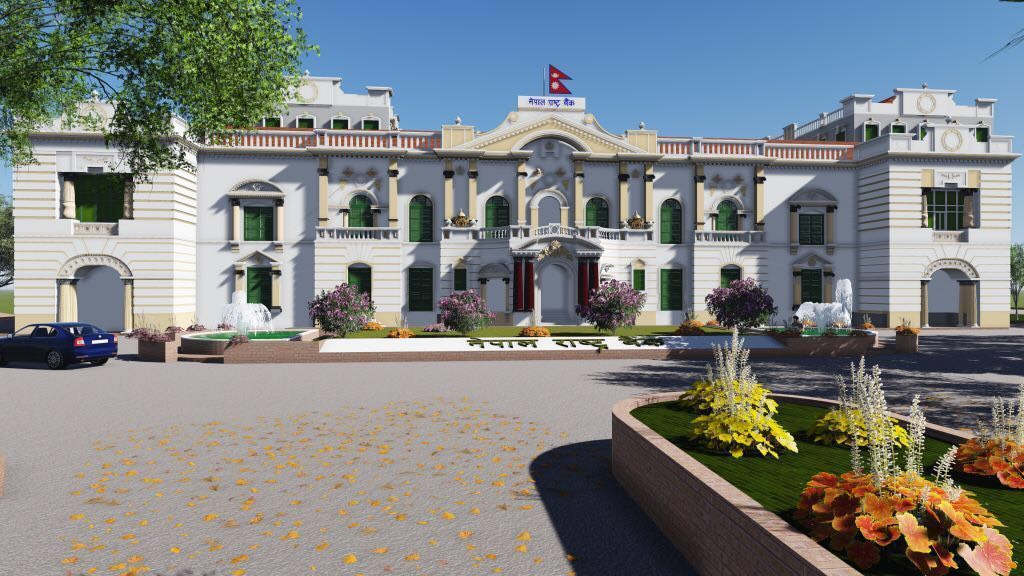Money & Finance

Nepal’s Foreign Exchange Reserves increased 2.5 per cent to Rs1,246.22 billion in mid-October 2022 from Rs 1,215.80 billion in mid-July 2022, Nepal Rastra Bank has said.
The central bank’s macroeconomic update shows a 0.6 per cent drop in the country’s gross forex reserves to $9.48 billion in mid-October 2022 against $9.54 billion in mid-July 2022.
Of the total foreign exchange reserves, the central bank’s share increased 4.3 percent to Rs1,101.60 billion in mid-October 2022 from Rs1,056.39 billion in mid-July 2022.
On the other hand, the reserves of the banks and financial institutions decreased 9.3 percent to Rs 144.62 billion in mid-October 2022 from Rs159.41billion in mid-July 2022. As a result, the share of Indian currency in total reserves stood at 23.8 percent in mid-October 2022.
The central bank’s Foreign Exchange Adequacy Indicators suggest the current reserves in the banking sector will cover merchandise imports for 9.6 months and merchandise and services for 8.3 months.
The reserves-to-GDP, reserves-to-imports, and reserves-to-M2 ratio stood at 25.7 percent, 69.5 percent, and 22.5 percent, respectively, in mid-October 2022. Such ratios were 25.1 percent, 57.8 percent, and 22.1 percent, respectively, in mid-July 2022.
Merchandise Trade
During the three months, merchandise exports decreased 35.7 per cent to Rs 41.82 billion against an increase of 109.5 per cent in the correspondent period in 2021/22.
Destination-wise, exports to India and China decreased by 45.0 per cent and 35.0 per cent, respectively, whereas exports to other countries increased by 5.0 per cent.
Exports of zinc sheets, particle boards, woolen carpets, readymade garments, and tea, among others, increased.
In contrast, exports of soyabean oil, palm oil, oil cakes, jute goods, silverware, and jewellery, among others, decreased in the review period.
Merchandise imports decreased 16.2 per cent to Rs 401 billion against an increase of 63.7 per cent a year ago.
Imports from India, China and other countries decreased by 14.8 per cent, 16.7 per cent, and 19.2 per cent, respectively.
The country imported more petroleum products, chemical fertilizer, sponge iron, medicine, coal, among others, in the three months.
Imports of transport equipment and parts, silver, telecommunication equipment and parts, crude soyabean oil, MS wire rod, bars, coils, among others, decreased in the review period.
Based on customs points, exports from Dry Port, Jaleshwor, Kailali, Krishnanagar, Mechi and Tribhuwan Airport Customs Offices increased, whereas exports from all the other major customs points decreased in the review period.
The import side
The volume of goods entering from the dry ports in Jaleshwor and Tatopani Customs Offices increased, but the rest of the major customs reported a decline.
The total trade deficit decreased by 13.1 per cent to Rs 359.18 billion during the period compared to a 58.3 per cent increase in the previous year.
According to the central bank report, the export-import ratio dropped by 10.4 per cent in the three months of this fiscal year. It stood at 13.6 per cent in the previous year.
During the three months of 2022/23, merchandise imports from India by paying convertible foreign currency amounted to Rs 34.59 billion. The amount stood at Rs 54.17 billion in the same period the previous year.






